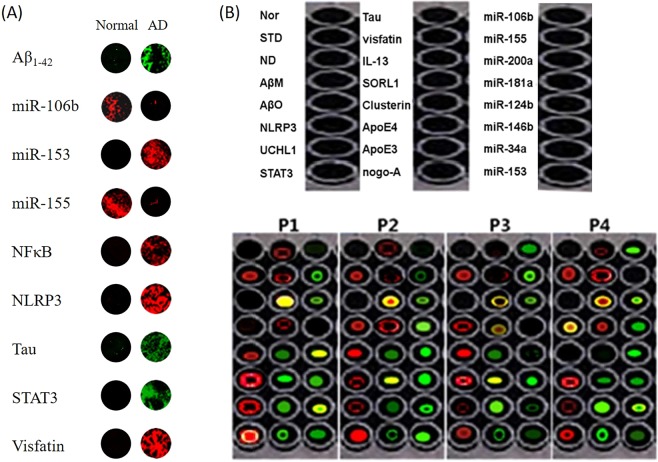Figure 5.
Human sample analysis using a molecular beacon NANP sensor. First, we want to confirm the applicability of ex vivo fluorescence in humans. (A) Profiling data for an AD-associated molecular beacon NANP sensor for normal and AD patients (ADAMBENA). Aβ1–42 miR-106b, miR-153, miR-155, NFκB, NLRP3, Tau, STAT3, and Visfatin were used as markers in two plasma samples from each normal and AD patient. (B) The profiling data for an AD-associated molecular beacon NANP sensor for 4 AD patients (ADAMBENA). miR-106b, miR-155, miR-200a, miR-181a, miR-124b, miR-146b, miR-34a, and miR-153 were used as markers in miRNA, and Aβ1–42 monomer, Aβ1–42 oligomer, NLRP3, UCHL1, STAT3, Tau, Visfatin, IL-13, SORL1, Clusterin, ApoE4, ApoE3, and Nogo-A were used as markers in four plasma samples from the AD patients.

